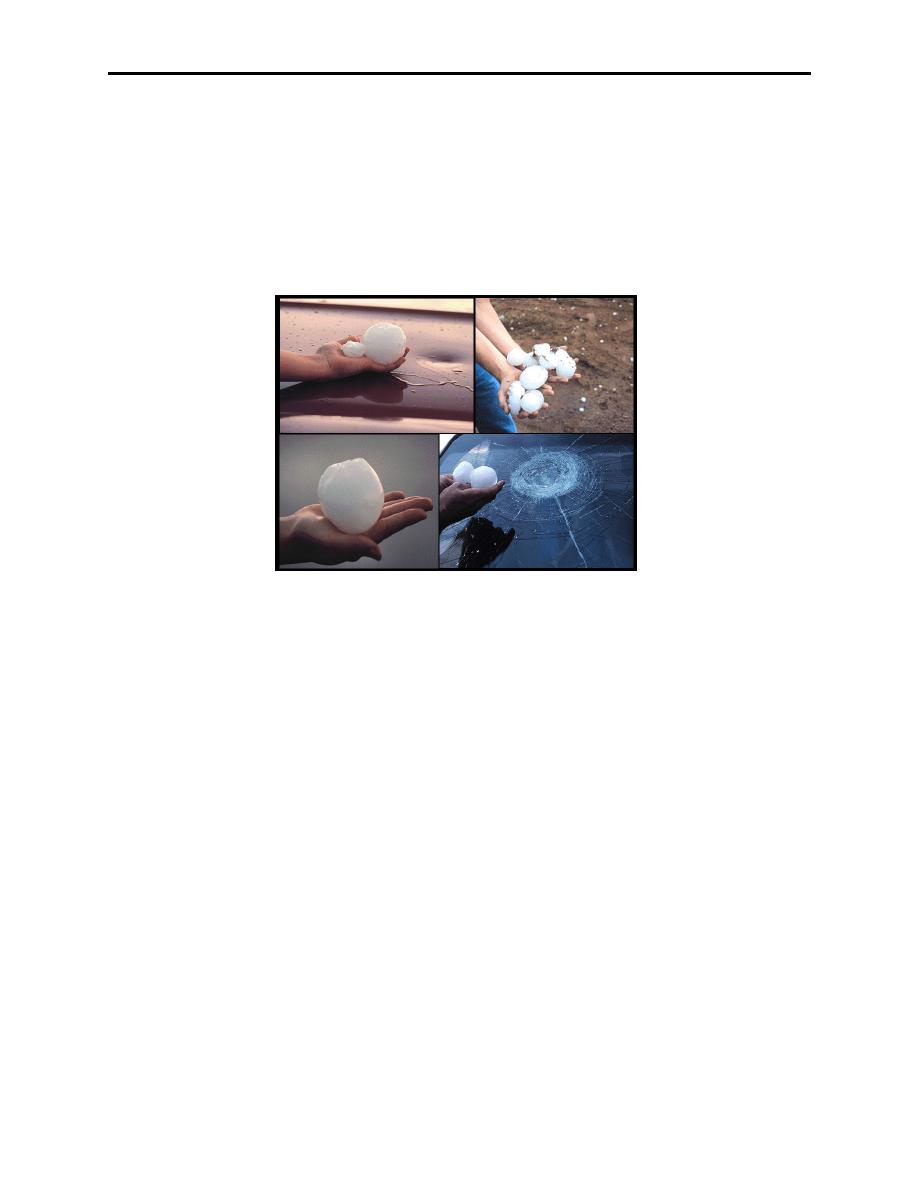 |
|||
|
|
|||
|
|
|||
| ||||||||||
|
|  AVIATION WEATHER
CHAPTER FOUR
Hail
As a rule, the larger the storm, the more likely it is to produce hail. Hail has been encountered as
high as 45,000 feet in completely clear air and may be carried up to 30 miles downwind from the
storm core. Aircrews should anticipate possible hail with any thunderstorm, especially beneath
the anvil of a large thunderstorm. Hailstones larger than 1/2 to 3/4 of an inch (Figure 4-4) can
cause significant aircraft damage in a few seconds. Give yourself a clearance of at least 20 miles
around a thunderstorm.
Figure 4-4 Hailstones
Lightning and Electrostatic Discharge
Lightning occurs at all levels in a thunderstorm. The majority of lightning bolts never strike the
ground, but occur between clouds or within the same cloud. Lightning also occurs in the clear
air around the tops, sides, and bottoms of storms. Aircrews flying several miles from a
thunderstorm can still be struck by the proverbial "bolt out of the blue." Lightning strikes can
also occur in the anvil of a well-developed or dissipated thunderstorm. Additionally, lightning
strikes in the anvil have occurred up to three hours after the thunderstorm has dissipated.
An electrostatic discharge (ESD) is similar to a lightning strike, but caused by the aircraft itself.
The larger and faster the aircraft, the more particles it impacts, generating a greater static
electricity charge on the airframe. The electrical field of the aircraft may interact with the cloud
and an ESD may then occur. Aircraft have reported damage from ESD occurring in cirrus
clouds downwind of previous thunderstorm activity, in cumulus clouds around a thunderstorm's
periphery, and even in stratiform clouds and light rain or showers. This release of static
electricity is frequently called Saint Elmo's fire.
Thunderstorms
4-5
|
|
Privacy Statement - Press Release - Copyright Information. - Contact Us |